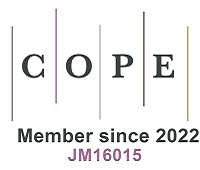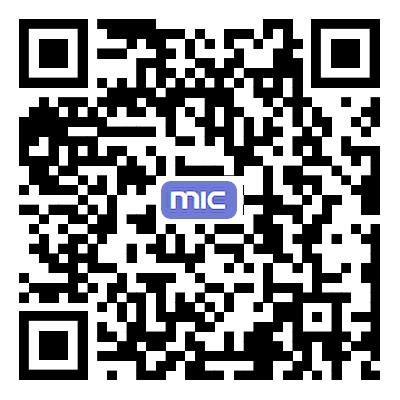REFERENCES
1. Tarascon J, Armand M. . Issues and challenges facing rechargeable lithium batteries. Materials for Sustainable Energy. Co-Published with Macmillan Publishers Ltd, UK; 2010. p. 171-9.
2. Kang K, Meng YS, Bréger J, Grey CP, Ceder G. Electrodes with high power and high capacity for rechargeable lithium batteries. Science 2006;311:977-80.
3. Xu K. Nonaqueous liquid electrolytes for lithium-based rechargeable batteries. Chem Rev 2004;104:4303-417.
5. Xia H, Li K, Guo Y, Guo J, Xu Q, Zhang J. CoS2 nanodots trapped within graphitic structured N-doped carbon spheres with efficient performances for lithium storage. J Mater Chem A 2018;6:7148-54.
6. Wang S, Guan BY, Yu L, Lou XWD. Rational design of three-layered TiO2 @Carbon@MoS2 hierarchical nanotubes for enhanced lithium storage. Adv Mater 2017;29:1702724.
7. Lee SM, Kim J, Moon J, et al. A cooperative biphasic MoOx-MoPx promoter enables a fast-charging lithium-ion battery. Nat Commun 2021;12:39.
8. Pei F, An T, Zang J, et al. From hollow carbon spheres to N-doped hollow porous carbon bowls: rational design of hollow carbon host for Li-S batteries. Adv Energy Mater 2016;6:1502539.
9. Wu J, Rui X, Long G, Chen W, Yan Q, Zhang Q. Pushing up lithium storage through nanostructured polyazaacene analogues as anode. Angew Chem Int Ed Engl 2015;54:7354-8.
10. Zhu Y, Yang M, Huang Q, et al. V2O5 textile cathodes with high capacity and stability for flexible lithium-ion batteries. Adv Mater 2020;32:e1906205.
11. Wang J, Cui Y, Wang D. Hollow multishelled structures revive high energy density batteries. Nanoscale Horiz 2020;5:1287-92.
12. Xiao Q, Fan Y, Wang X, Susantyoko RA, Zhang Q. A multilayer Si/CNT coaxial nanofiber LIB anode with a high areal capacity. Energy Environ Sci 2014;7:655-61.
13. Polat B, Levent Eryılmaz O, Keleş O. Si based anodes via magnetron sputtering for LIB. ECS Electrochemistry Letters 2014;3:A45-9.
14. Varghese B, Reddy MV, Yanwu Z, et al. Fabrication of NiO nanowall electrodes for high performance lithium ion battery. Chem Mater 2008;20:3360-7.
15. Yu M, Wang A, Wang Y, Li C, Shi G. An alumina stabilized ZnO-graphene anode for lithium ion batteries via atomic layer deposition. Nanoscale 2014;6:11419-24.
16. Wang J, Zhou B, Zhao H, et al. A sandwich-type sulfur cathode based on multifunctional ceria hollow spheres for high-performance lithium-sulfur batteries. Mater Chem Front 2019;3:1317-22.
17. Zhao Y, Wang F, Wang C, et al. Encapsulating highly crystallized mesoporous Fe3O4 in hollow N-doped carbon nanospheres for high-capacity long-life sodium-ion batteries. Nano Energy 2019;56:426-33.
18. Wang C, Wang J, Hu W, Wang D. Controllable synthesis of hollow multishell structured Co3O4 with improved rate performance and cyclic stability for supercapacitors. Chem Res Chin Univ 2020;36:68-73.
19. Yan Z, Jin H, Guo J. Low-temperature synthesis of graphitic carbon-coated silicon anode materials. Carbon Energy 2019;1:246-52.
20. Zhang F, Cao H, Yue D, Zhang J, Qu M. Enhanced anode performances of polyaniline-TiO2-reduced graphene oxide nanocomposites for lithium ion batteries. Inorg Chem 2012;51:9544-51.
21. Chen Z, Chen J, Bu F, Agboola PO, Shakir I, Xu Y. Double-holey-heterostructure frameworks enable fast, stable, and simultaneous ultrahigh gravimetric, areal, and volumetric lithium storage. ACS Nano 2018;12:12879-87.
22. Kim W, Hwa Y, Jeun J, Sohn H, Hong S. Synthesis of SnO2 nano hollow spheres and their size effects in lithium ion battery anode application. J Power Sources 2013;225:108-12.
23. Xie Q, Zhao Y, Guo H, et al. Facile preparation of well-dispersed CeO2-ZnO composite hollow microspheres with enhanced catalytic activity for CO oxidation. ACS Appl Mater Interfaces 2014;6:421-8.
24. Zhao H, Dong Y, Jiang P, Wang G, Zhang J. Highly dispersed CeO2 on TiO2 nanotube: a synergistic nanocomposite with superior peroxidase-like activity. ACS Appl Mater Interfaces 2015;7:6451-61.
25. Zeng M, Li Y, Mao M, Bai J, Ren L, Zhao X. Synergetic effect between photocatalysis on TiO2 and thermocatalysis on CeO2 for gas-phase oxidation of benzene on TiO2/CeO2 nanocomposites. ACS Catal 2015;5:3278-86.
26. Primo A, Marino T, Corma A, Molinari R, García H. Efficient visible-light photocatalytic water splitting by minute amounts of gold supported on nanoparticulate CeO2 obtained by a biopolymer templating method. J Am Chem Soc 2011;133:6930-3.
27. Wu X, Niu H, Fu S, et al. Core-shell CeO2@C nanospheres as enhanced anode materials for lithium ion batteries. J Mater Chem A 2014;2:6790.
28. Wang X, Liu D, Song S, Zhang H. Pt@CeO2 multicore@shell self-assembled nanospheres: clean synthesis, structure optimization, and catalytic applications. J Am Chem Soc 2013;135:15864-72.
29. Hua C, Fang X, Yang Z, Gao Y, Wang Z, Chen L. Lithium storage mechanism and catalytic behavior of CeO2. Electrochem commun 2012;25:66-9.
30. Sasidharan M, Gunawardhana N, Yoshio M, Nakashima K. CeO2 hollow nanospheres as anode material for lithium ion batteries. Chem Lett 2012;41:386-8.
31. Wang G, Bai J, Wang Y, Ren Z, Bai J. Prepartion and electrochemical performance of a cerium oxide-graphene nanocomposite as the anode material of a lithium ion battery. Scripta Materialia 2011;65:339-42.
32. Bai H, Liu Z, Sun DD. A lithium-ion anode with micro-scale mixed hierarchical carbon coated single crystal TiO2 nanorod spheres and carbon spheres. J Mater Chem 2012;22:24552.
33. Zhao B, Jiang S, Su C, et al. A 3D porous architecture composed of TiO2 nanotubes connected with a carbon nanofiber matrix for fast energy storage. J Mater Chem A 2013;1:12310.
34. Chen Y, Huang QZ, Wang J, Wang Q, Xue JM. Synthesis of monodispersed SnO2@C composite hollow spheres for lithium ion battery anode applications. J Mater Chem 2011;21:17448.
35. Han F, Li W, Li M, Lu A. Fabrication of superior-performance SnO2@C composites for lithium-ion anodes using tubular mesoporous carbon with thin carbon walls and high pore volume. J Mater Chem 2012;22:9645.
36. Liu B, Cao M, Zhao X, Tian Y, Hu C. Facile synthesis of ultrafine carbon-coated SnO2 nanoparticles for high-performance reversible lithium storage. J Power Sources 2013;243:54-9.
37. Zhu T, Chen JS, Lou XWD. Glucose-assisted one-pot synthesis of FeOOH nanorods and their transformation to Fe3O4@carbon nanorods for application in lithium ion batteries. J Phys Chem C 2011;115:9814-20.
38. Ma Y, Zhang C, Ji G, Lee JY. Nitrogen-doped carbon-encapsulation of Fe3O4 for increased reversibility in Li+ storage by the conversion reaction. J Mater Chem 2012;22:7845.
39. Hui K, Fu J, Liu J, et al. Yolk-shell nanoarchitecture for stabilizing a Ce2S3 anode. Carbon Energy 2021; doi: 10.1002/cey2.130.
40. Massiot D, Fayon F, Capron M, et al. Modelling one- and two-dimensional solid-state NMR spectra: modelling 1D and 2D solid-state NMR spectra. Magn Reson Chem 2002;40:70-6.
41. Oka R, Shobu Y, Aoyama F, Tsukimori T, Masui T. Synthesis and characterisation of SrY2-xCexO4 as environmentally friendly reddish-brown pigments. RSC Adv 2017;7:55081-7.
42. Pang H, Chen C. Facile synthesis of cerium oxide nanostructures for rechargeable lithium battery electrode materials. RSC Adv 2014;4:14872-8.
43. Song Y, Chen Z, Li Y, et al. Pseudocapacitance-tuned high-rate and long-term cyclability of NiCo2S4 hexagonal nanosheets prepared by vapor transformation for lithium storage. J Mater Chem A 2017;5:9022-31.
44. Song Y, Cao Y, Wang J, et al. Bottom-up approach design, band structure, and lithium storage properties of atomically thin γ-FeOOH nanosheets. ACS Appl Mater Interfaces 2016;8:21334-42.
45. Shi Y, Tang M. NMR/EPR investigation of rechargeable batteries. Acta Phys-Chim Sin 2020;36:1905004.
46. Tang M, Sarou-Kanian V, Melin P, et al. Following lithiation fronts in paramagnetic electrodes with in situ magnetic resonance spectroscopic imaging. Nat Commun 2016;7:13284.










